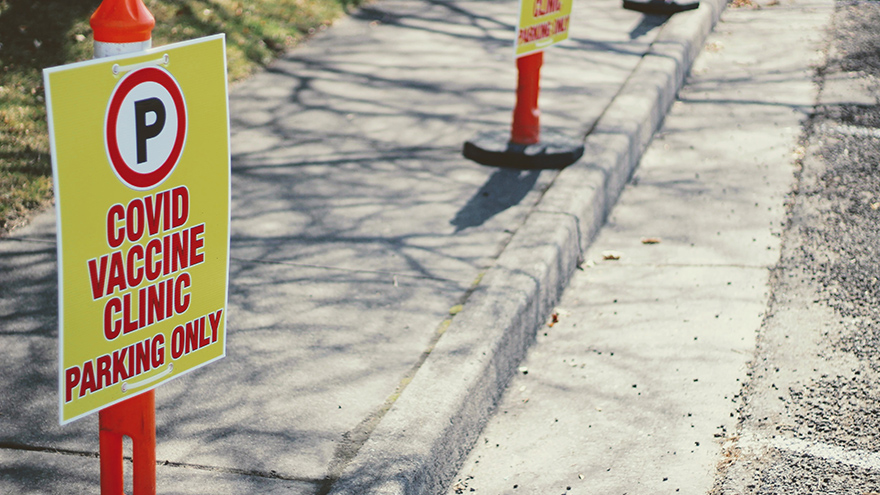A nudge towards the vaccine
How do we incentivise vaccine take-up? A few behavioural science insights.

Photo by Joshua Hoehne on Unsplash
Since the beginning of the year, one topic has dominated the conversation – the coronavirus vaccines. Who’s getting them? Why are they getting them? And, how can we ‘nudge’ hesitant people to get them?
In the past term, the class of Applied Behavioural Science for Public Policy (part of our Master of Public Policy) have explored how behavioural science – a mix of behavioural economics and psychology – has been used across the policy spectrum to improve outcomes. However, just as important as learning about how well behavioural science works, is learning that sometimes interventions and ‘nudges’ don’t work in a specific context.
The need to test interventions is therefore vital, and the purpose of this module is to explore more widely when and why ‘nudges’ work, how they have been used to influence behaviour the world over, and why it is so important to test and evaluate them. Of course, we couldn’t resist putting some of our own interventions to the test while we were at it.
As we approach 18 months since the start of the first COVID-19 lockdowns in the UK and US, there is a glimmer of hope on the horizon that the days of Zoom quizzes and elbow bumps are behind us for good – the vaccine. In the UK, vaccine take up has surpassed expectation with more than 59% of the population having received at least one dose. The US is not far behind with around 51% of the population vaccinated (Our World in Data, 2021). However, there are still many people who are wary of getting the vaccine: 12% of those in the UK and 36% of those in the US are either uncertain about or unwilling to get vaccinated (Our World in Data, 2021).
When it comes to getting the vaccine there is one group of particular interest to this year’s crop of students: the under 30s. For them, the risk of hospitalisation from the virus if they catch it is around one percent and yet having them vaccinated is crucial to achieving herd immunity, and ensuring that the elderly and those with pre-existing medical conditions – the vulnerable – are protected from the virus. Having a vaccine in this age group is therefore altruistic and arguably presents a possible challenge to the overall success of the vaccine roll out. Add to this the concern about blood clots (see Gov.uk, 2021) and other possible side-effects (not yet substantiated by the data) and there is a potential for greater levels of vaccine hesitancy in this age group. With this in mind, we set the MPP students in this year's class a challenge: use the behavioural science we have learnt about in class to design a poster which will reduce vaccine hesitancy amongst those not currently vaccinated and aged between 20 and 30 in the US.
The course equipped students with knowledge of a range of different behavioural nudges which they could employ in their posters. What they chose to do was up to them but, in line with ‘nudges’, they weren’t allowed to forbid options or change the underlying incentive. Instead, they simply had the ability to alter the presentation of a choice to change behaviour (Thaler & Sunstein, 2008). The result was two well thought-out and very different posters: one utilising images of similar people to the target group and emphasising the benefits to self of the vaccine; and the other focusing on the protection of others and individual responsibility to ‘do your bit’ (Figure 1).

Figure 1: Posters developed by 2021 class of Applied Behavioural Public Policy module. Top – Group 1, bottom – Group 2.
Armed with the posters (and a control of no poster) it was time to see how effective they were on a sample of 225 unvaccinated, 20- to 30-year-old MTurk users in the US. Participants were randomly assigned to one of the three conditions before being asked their likelihood to get a vaccine as well as questions about whether they would recommend the vaccine, had a vaccine preference and their perceived threat of coronavirus. So which poster came out on top?
There was very little difference between the two treatment groups and the control in terms of vaccine hesitancy. The average response, around 3, indicates that most people were ‘likely’ to take up the offer of a vaccine when it was made available (see Figure 2). The good news here is that the reason why little change in intention was seen for the posters is probably due to the fact that the intention to get vaccinated was already high, meaning there was little benefit of nudging (Figure 2). The largest difference (albeit, still insignificant) from the control is in the likelihood to recommend the vaccine to a friend of a similar age. Here, both groups, but particularly group 2, increased the likelihood to recommend by a few percentage points - from 68% to 73.8% (Figure 3).


Based on this study alone, it would seem that the US government doesn’t need to worry about a low vaccine uptake in this age group. Of course, no study should be viewed in isolation and the interpretation of our results should be made in light of the context and small (unrepresentative) sample size. Nonetheless, with vaccination rates exceeding expectation in all other age groups, there seems no reason to believe that the high intentions to vaccinate found in this study won’t translate to the real world - ultimately only time will tell.
Michael Sanders is an Associate Fellow at the Blavatnik School of Government at the University of Oxford. He is the Chief Executive of What Works for Children’s Social Care and Reader in Public Policy at King’s College London.Emma Stockdale is a Doctoral Student in the Department of Political Economy at King’s College London.
